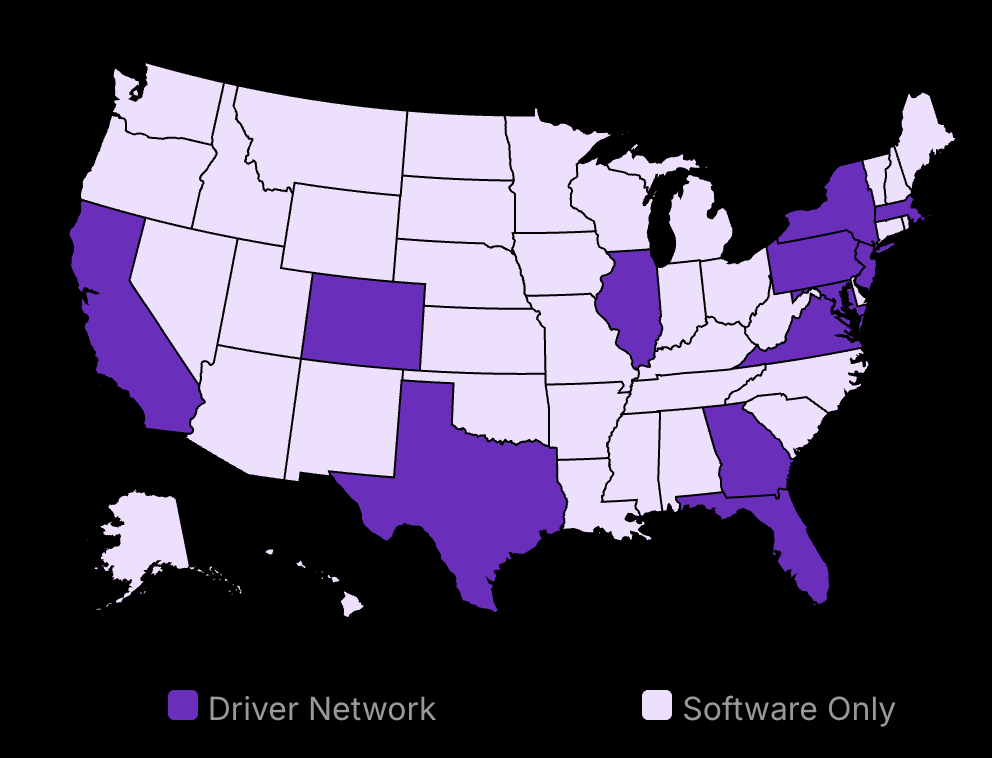Running a coffee shop in 2025 is a complex mix of science and human connection. Every morning, millions of people start their day with a cup of coffee from their local café. Behind each perfect espresso and satisfied customer stands a manager making hundreds of decisions.
Here’s what makes the difference between those who leave and those who build thriving cafés: systematic knowledge combined with people skills.
This guide breaks down exactly what you need to succeed as a coffee shop manager. We’ll cover everything from managing inventory and leading teams to creating unforgettable customer experiences. You’ll learn practical skills that work in real situations, not just theory. Incorporating delivery services can also set your coffee shop apart from the competition, offering convenience to customers who prefer to enjoy their favorite brews at home or at work. Learn more about how to enhance your business through delivery options in this insightful article on coffee shop delivery strategies, which can substantially broaden your customer base.
Whether you’re dealing with a sudden rush of customers, training new baristas, or planning next month’s budget, you need a clear system. This guide gives you that system, built from real experiences and proven methods, helping you react in seconds to challenges. In today’s competitive landscape, cafes are embracing innovations like delivery services to retain and attract customers. By incorporating coffee shop delivery options, you can significantly broaden your customer base and enhance convenience for your regulars.
The coffee industry is changing fast. New brewing methods, shifting customer preferences, and advancing technology mean managers need to stay sharp. From mobile ordering through a browser to real-time customer feedback, tech integration plays a bigger role than ever. But the fundamentals of great management remain constant: strong leadership, solid operations, and exceptional service.
Ready to learn the exact steps to become an outstanding coffee shop manager? Let’s start with the basics and explore how to enhance your café’s view—both from a customer’s perspective and operational efficiency.

Lower your delivery costs by 23%
How we reduce costs:
- No delivery vehicle expenses
- Optimized local routes
- Pay-per-delivery model
- Average 23% delivery cost reduction
Managing Coffee Shop Operations: How to Site Properly and Implement Systems
-
Understand your shop’s vision and plan operations. For managers aiming to elevate their coffee shop operations, having a comprehensive checklist for essential supplies is crucial. This helps ensure that nothing important is overlooked when sourcing equipment. Exploring insights about the essentials can provide clarity on what tools are best suited for different operational needs. You can find valuable information in this article on the ultimate checklist for coffee shop equipment to streamline your setup and improve efficiency.
-
Develop an efficient workflow and control costs.
-
Track inventory and improve staff coordination.
Step 1: Understand Your Coffee Shop’s Vision
For a coffee shop manager, the first step is to grasp the coffee shop’s vision. This includes brand identity and goals. Knowing what makes your brand unique helps in aligning daily operations.
These elements define everything from the decor to the menu. Answer key questions: What image does your coffee shop project? What values guide your business decisions? Align these with operational choices, ensuring every action resonates with the overarching vision. When team members share the same understanding, operations run more smoothly.
Know your mission and let it influence daily decisions. It’s crucial to ensure that all systems are verified properly, like ensuring the site’s security features are functioning smoothly. If verification is successful, a few seconds may be all it takes to proceed with key actions. Remember to view and respond promptly to any browser prompts or Ray ID codes, which may appear while you’re proceeding with site-related tasks. Staying on top of these tasks helps maintain security and streamlines your workflow. In addition, consider how the physical layout and ambiance of your coffee shop can create an inviting atmosphere that attracts and retains customers. Effective coffee shop design can transform your space, emphasizing comfort and accessibility that encourages patrons to linger and return.
In addition to creating an inviting atmosphere, understanding your coffee shop’s supply needs is critical for success. Ensure you have a comprehensive knowledge of essential coffee shop supplies for 2025. This includes everything from high-quality brewing equipment to eco-friendly materials that align with your customers’ values. To dive deeper into what supplies you need to thrive in the upcoming year, check out our detailed guide on essential coffee shop supplies.
Step 2: Develop a Comprehensive Business Plan
Your next priority is developing a detailed business plan. Start with a financial plan and budget. It’s vital to predict expenses and sales within a few seconds of reviewing trends. Keep track of these numbers monthly. Financial planning helps you avoid surprises and ensures healthy cash flow. Next, devise marketing strategies. Consider local campaigns and social media engagement to improve your shop’s visibility.
Research competitors and identify their strengths and weaknesses. Importantly, create clear operations strategies. Define roles and responsibilities, so there’s no confusion among staff. A comprehensive business plan should include an executive summary that introduces key elements such as budget, mission, market, and core values. It serves as a roadmap, guiding every decision toward success while ensuring seamless proceeding through different stages.
Step 3: Implement Efficient Workflow Systems
Efficient workflow systems are central to running a coffee shop. Start by organizing staff schedules. Allocate tasks based on skills. Use digital tools for shifts if possible. This cuts down on human error. Ensure that everyone knows their responsibilities and can respond quickly to customer needs. Streamline communication for a smoother shift. Next, focus on optimizing service flow.
Arrange your space for easy movement, improving the view and efficiency of operations. Place machines and ingredients where they’re needed most. Investments in semi-automated equipment could enhance speed and consistency. Regularly revisit and update processes to boost service quality and pace.
Foster Teamwork Through Clear Workflows
To enhance productivity, ensure that the staff works jointly. Encourage sharing of tasks. Each member should know their role but also have an understanding of other roles. Andrew Atkin emphasizes teamwork, where everyone contributes to the inventory process. Including staff in planning fosters a collaborative environment. It also enhances efficiency and job satisfaction. Regular team meetings can address workflow issues and review performance for continuous improvement.
Step 4: Inventory Management and Cost Control
Effective inventory management is vital to keep costs in check. Adopt the FIFO method for stocking: first in, first out. This means older stock is used first, minimizing waste and keeping products fresh. It’s like managing perishable items; they need timely use. Inventory is always tracked precisely, just as you’d monitor dairy products. Regular audits of stock levels help in understanding patterns and prevent shortages. Use software if possible to assist in tracking and ensure security in stock handling. If discrepancies arise, checking the ray ID or transaction logs can help pinpoint issues. Maintaining an up-to-date inventory process is key to long-term success.
Maintain a close eye on waste and strive to reduce it. Unsold products can add up and hurt your profits. Periodic analysis of sales data can highlight what’s moving and what’s not. This insight helps in fine-tuning orders and avoiding excess. A strict cost control system supports financial stability.
Step 5: Embrace Technology in Daily Operations
Integrating technology into your operations can simplify many tasks. Consider using management software like Cropster Cafe. It assists by providing real-time data on various facets such as brewing processes and machine usage. This application helps in maintaining consistency and operational efficiency. Technological tools transform daily procedures into streamlined processes, saving both time and effort. Stay updated on tech advancements to enhance client experience and manage business proficiently. As you look to streamline operations further, consider exploring the best Coffee Shop POS systems that can enhance your business efficiency. These systems help with sales tracking, inventory management, and customer engagement, making them essential tools for modern coffee shops.
Building Essential Leadership Skills for Cafes
-
Develop clear communication with your team and customers.
-
Set an example by showing professionalism.
-
Boost teamwork through regular team-building.
Step 1: Cultivate Effective Communication
Clear and honest communication is vital in a café environment. Start by practicing active listening when dealing with both staff and customers. This means giving full attention, asking questions, and reflecting on what’s shared to understand and act upon it. Active listening enhances relationships and ensures everyone feels heard, reducing misunderstandings and boosting employee satisfaction. A strong connection between management and staff leads to smoother operations and better service.
Conflict resolution skills are essential, too. Provide a safe space where team members can express concerns or issues. Tackle conflicts directly but with an open mind, ensuring both parties feel respected and understood. Quick responses are key—addressing problems within a few seconds can prevent larger disruptions.
Step 2: Lead by Example
Your behavior sets the tone for your café. Demonstrating punctuality and professionalism is critical. Arrive on time, dress appropriately, and maintain a positive attitude. This behavior not only earns the respect of your team but also creates an environment where standards are clear. Keeping operations running smoothly requires an up-to-date approach to leadership, ensuring policies reflect industry best practices.
Show genuine love for coffee and service. Share your expertise with your team, from brewing techniques to customer interaction tips. Your passion will motivate them to achieve higher standards. Remember, when you lead with passion, it translates into better service and satisfied customers. Whether training new staff or addressing customer concerns, the ability to respond quickly can make a huge difference in service quality.
Step 3: Foster Team Collaboration
A cohesive team is the backbone of any vibrant café. Encourage teamwork by facilitating open dialogue where ideas and feedback flow freely. Organize team-building activities that boost morale and strengthen relationships. About 75% of employers find teamwork and collaboration very important, and 97% recognize a lack of alignment negatively impacts work outcomes.
Encouraging Team Spirit
-
Schedule monthly team outings or in-café challenges.
-
Mix teams during shifts to break routines and build new dynamics.
-
Assign group tasks that promote a sense of achievement when completed.
Effective leadership isn’t just about giving tasks; it’s about creating a supportive, learning environment. Your employees look to you for guidance, and with these skills, you can lead your café to greater success. Focus on what aligns your team, improves performance, and meets common goals. Staying proactive with security measures, such as proper cash handling and shift protocols, also contributes to a well-managed site. Strong leadership will keep your café on track while ensuring smooth proceeding through daily challenges.
Customer Experience Strategies for Cafes: Key Tactics
-
Better customer service brings more smiles and more loyalty.
-
Make your cafe comfortable and customers will linger longer.
-
Personal touches turn first-time visitors into regulars.
Step 1: Enhance Customer Service Practices
A good cafe manager trains the staff well. You need to focus on customer engagement and satisfaction.
-
Train Staff on Customer Engagement: Hold regular workshops to teach your team how to engage with customers. Role-play different scenarios to build confidence. Make sure each team member knows your cafe’s vision and values, so they connect with customers consistently. Use feedback sessions to keep conversations going. This ongoing dialogue creates a culture of improvement. Understanding customer service Christopher McCormick says is essential: “A lot of people have fancy things to say about customer service, but it’s just a day-in, day-out, ongoing, never-ending, persevering, compassionate kind of activity.”
-
Address Feedback Promptly and Constructively: Monitor feedback through different channels such as online comments, surveys, and direct conversations. Respond to feedback promptly. Use a calm and constructive tone to address any issues. Apply customer input to make meaningful improvements. People respect a business that listens. Having a system in place to manage feedback ensures consistency.
Practical Tips for Customer Service
-
Create a list of common customer issues and how to handle them.
-
Set clear goals for response times and service standards.
-
Conduct regular staff meetings to discuss updates and feedback.
Step 2: Create a Welcoming Atmosphere
Your cafe should feel warm and inviting. A well-designed space keeps customers coming back.
-
Design a Comfortable and Inviting Space: Think about your layout. Use furniture that encourages relaxation. Soft seating areas make for great hangouts. Keep spaces flexible so you can adjust based on crowd size. Interior design plays a critical role. As Penny Wilson suggests: “A good design shows respect for your customer and you’re either respectful of their time or respectful of what it is that they desire…” This respect builds trust and loyalty.
-
Select Appropriate Background Music and Decor: The music and decor should match your cafe’s theme. Keep music at a volume that allows easy conversation yet sets a mood. Use decor that feels authentic. Avoid cluttering spaces. Rotating seasonal decorations keeps your cafe fresh. Music apps can help you tailor playlists to different times of day.
Designing the Perfect Cafe Space
-
Choose decor that resonates with your brand.
-
Test different music styles before settling on a playlist.
-
Encourage customer feedback on both decor and music.
Step 3: Personalize Customer Experience
Making customers feel special is vital. Knowing their preferences means a lot.
-
Remember Regular Customers’ Preferences: Train staff to note regulars’ preferences. A simple, “The usual?” means a lot to people. Encourage staff to use names and show personal interest. This gesture creates a bond between your team and the customers. A personalized approach ensures customers feel important each visit.
-
Use Loyalty Programs and Personalized Offers: Offer loyalty cards to reward frequent visitors. Create deals based on buying patterns. Send personalized emails with offers tailored to individual preferences. Use your CRM (Customer Relationship Management) system effectively. Personalization could prevent disappointment as mentioned by Andrew Custage, “Customer disappointment — that’s the danger in not taking personalization seriously.”
Making the Most of Personalization
-
Build a database of regular customers’ preferences.
-
Tailor offers to individuals and sends them through preferred channels.
-
Keep tweaking your programs based on customer feedback and engagement levels.
Each step builds a complete experience for your customers, turning your cafe into their go-to spot. Being a good manager in a cafe involves mastering these strategies. It requires attention to detail, empathy, and responsiveness. The role encompasses engaging with customers, overseeing operations, and maintaining a top-notch team.
Boosting Cafe Employee Morale: The Manager’s Guide
-
Recognize and reward staff achievements to boost engagement
-
Offer growth and development to improve retention
-
Create a positive work environment for happier employees
Step 1: Recognize and Reward Achievements
Recognizing achievements is crucial in maintaining high employee morale. Create an employee recognition program tailored to celebrate individual and team successes. Whether it’s a simple “Employee of the Month” board or an in-depth point-based system, make sure everyone knows how they can earn recognition. Set clear criteria for achievements that warrant rewards. Frequent recognition boosts engagement and performance while strengthening the connection between employees and management.
For an effective program, transparency is key. Clearly outline criteria for earning rewards. Offer diverse rewards to cater to different preferences. Gift cards, extra days off, or even lunch out with management can be great motivators. Emphasize the importance of managerial recognition in the program to leverage this engagement boost. Keeping the program up to date ensures it remains relevant and valuable.
Implement Employee Recognition Programs
Create a process to track accomplishments. Use tools like employee feedback apps to gather information on achievements. Encourage peer recognition to foster a supportive environment. Facilitate monthly meetings where employees can share their achievements or commend a colleague. This practice can open up channels for positive feedback and strengthen teamwork. Security measures should be in place to verify recognition submissions and prevent bias in the process.
Step 2: Provide Growth and Development Opportunities
Career development is a priority for many employees. Offering training and skill development can significantly enhance morale and retention. Identify skills gaps within your team. Provide targeted training sessions or online courses. Consider budget-friendly options like webinars or workshops specific to coffee-making, customer service, or management skills. A strong site for employee learning, such as an internal portal, can make resources easily accessible.
Promoting from within shows a commitment to employee advancement. Develop a system to identify potential leaders. Use performance reviews and feedback to guide promotions. This approach not only fills management roles with familiar faces but encourages all staff to view their job as a career path. This mindset can improve retention among employees with access to development opportunities.
Support Ongoing Training and Skill Development
Schedule monthly training sessions, alternating between in-house topics and guest-led workshops. Partner with local educational institutions for specialized training programs. Provide team members with temporary assignments to broaden their expertise and responsibilities. This approach can lead to a significant increase in productivity. Make sure training materials are frequently updated to reflect industry changes.
Step 3: Maintain a Positive Work Environment
Employees thrive in workplaces that support their well-being. Encouraging a balance between work and life boosts employee satisfaction. Consider flexible schedules where possible. Allow employees to swap shifts or adjust hours to accommodate personal commitments. Offering such flexibility can foster loyalty and improve job satisfaction. Ensuring smooth proceedings for scheduling changes can prevent workplace conflicts.
Open communication is critical in addressing grievances. Establish an anonymous feedback system to encourage honest input. Ensure that complaints are addressed promptly and fairly. Create a streamlined process for reporting and resolving conflicts to prevent frustration. Building a culture of trust encourages employees to share their concerns without fear. A quick response to issues, ideally within a few seconds, can prevent small problems from escalating.
Encourage Work-Life Balance and Flexibility
Introduce remote work options where feasible. Explore part-time contracts or job-sharing models to cater to various needs. Ensure that workload distribution is fair, so no one feels overburdened. Regularly check in with your team to assess the effectiveness of these measures. This proactive approach aligns closely with the evolving needs of modern employees and promotes a healthy work culture. Creating a strong connection between work expectations and employee well-being ensures long-term success.
Advanced Tips for Managing Coffee Shop Operations
-
Master smart tech for inventory and sales.
-
Spot and fix common mistakes.
-
Know when to adjust staff levels.
Additional Advice for Efficient Management
Managing a coffee shop now requires using sophisticated technology. Automating inventory and sales practices allows managers to maintain better control. Systems offering real-time inventory updates keep your business informed and agile. They provide insights into popular items, so you don’t run out. Time-saving tech such as barcode scanning or automatic reordering not only cuts down on human error but also frees staff to focus on enhancing customer experiences.
Eco-friendly practices are another focal point. Today’s customers value environmental responsibility. Introducing compostable cups, promoting reusable containers, or sourcing sustainably grown coffee sends a strong message. The impact on the environment is reduced, and customers often reward businesses that align with their values. Understanding the practical benefits, such as waste reduction and positive customer feedback, solidifies this approach.
In their book “The Omnivore’s Dilemma,” Michael Pollan explores how consumer choices impact the environment. This work helps deepen your understanding. Embracing these trends shows adaptability and keeps you competitive, but it’s vital to balance costs and benefits.
Common Pitfalls and How to Avoid Them
Managing finances accurately is crucial. Regular audits help maintain financial health. Simple mistakes can lead to significant losses. Audits uncover these issues early. Creating a financial buffer allows operations to continue smoothly. Using financial software supports managers in tracking profits and losses efficiently.
Another challenge is staffing. Analyzing customer traffic helps maintain the right staff levels. Both overstaffing and understaffing may hurt the business. Use sales data to predict busy times and make staffing decisions. Remember, 1 in 4 people are looking to quit their job, so keeping staff happy and appropriately scheduled is essential. This ensures cost-effective operations and satisfied employees.
Books like “Good to Great” by Jim Collins provide insights into maintaining a motivated workforce by establishing proper processes and understanding business rhythms.
Spotting and Adjusting for Business Patterns
Identifying key patterns in your business helps in making informed decisions. Seasonal changes can significantly affect sales and staffing needs. By reviewing past data, manage peak seasons more effectively, ensuring supply meets demand without excessive waste.
Technology solutions available today offer detailed reporting functions, providing thorough insights into customer buying habits and peak times. These reports help predict future trends and guide operational adjustments, keeping the shop running smoothly under varying conditions.
Data-backed details show industry recovery and growth, reflecting that cafes are now significantly investing in tech advancements. These tools provide the backbone for decision-making, helping to avoid common pitfalls in day-to-day operations and long-term planning—essential knowledge for staying ahead in the competitive coffee business landscape.
Engaging these deeper practices helps pave the way for more robust operations, ensuring that managers not only maintain but enhance their cafe’s success over time.
Troubleshooting Common Issues
-
Learn how to reduce staff turnover with exit interviews and onboarding.
-
Avoid equipment breakdowns through regular checks and a service provider list.
-
Gain practical solutions for common management headaches.
Solutions to Staff Turnover Problems
1 in 4 employees are thinking about quitting their jobs. Acknowledging this reality, as a coffee shop manager, is crucial. Understanding turnover helps maintain a stable team. This is all about keeping staff happy and productive.
Conduct Exit Interviews to Gather Insights
Step 1: Create an Exit Interview Template
Prepare a list of questions that focus on understanding why employees leave. Include both open and closed-ended questions to capture a range of insights. Questions should explore reasons for leaving, likes/dislikes about the job, and suggestions for improvement.
Step 2: Schedule the Interview Before Their Last Day
Arrange a convenient time for the interview, ensuring it’s set before the employee’s final day. This helps ensure more honest feedback. Timing is key – neither too early nor too close to their departure.
Step 3: Maintain a Relaxed and Private Setting
Conduct the interview in a private area free from interruptions. This encourages openness and honesty. Assure them that their feedback is valued and will remain confidential.
Step 4: Analyze and Implement Feedback
Review the feedback to identify recurring themes or issues. Are there common reasons for leaving? Use these insights to make necessary adjustments in the workplace.
Step 5: Regularly Update Policies Based on Feedback
Create an action plan to address any concerns raised. This could mean policy changes, training sessions, or initiating workplace improvements.

Develop a Strong Onboarding Program for Newcomers
A solid onboarding program is vital for reducing turnover and setting new hires up for success.
Step 1: Outline Key Processes and Procedures
Develop a structured plan highlighting essential training areas. Include job-specific training, company culture orientation, and tools/software instruction.
Step 2: Assign a Mentor or Buddy
Pair new hires with experienced staff members. This buddy system encourages connection and provides guidance, helping them navigate their new environment.
Step 3: Set Clear Expectations from Day One
Ensure new staff understand their roles, responsibilities, and performance standards. Clarity prevents miscommunications and builds confidence.
Step 4: Check in Frequently During the First Month
Schedule regular one-on-one meetings to discuss progress, answer questions, and address concerns. This shows support and willingness to help.
Step 5: Request Feedback on the Onboarding Experience
Gather input from new hires on the onboarding process. Use their feedback to improve the experience for future hires.
Addressing Equipment Breakdown Scenarios
Broken equipment can halt operations, costing time and money. Preventive measures keep your coffee shop running smoothly.
Schedule Regular Equipment Maintenance Checks
Proper equipment function is key to service quality and efficiency.
Step 1: Create a Maintenance Calendar
Develop a schedule for regular equipment checks. Include specifics like monthly inspections, quarterly servicing, and annual deep cleaning. Stick to this schedule rigorously.
Step 2: Train Staff on Basic Equipment Checks
Train your team to identify early signs of wear and tear. This includes unusual noises, declining performance, or any physical damages. Early identification can prevent small issues from becoming major problems.
Step 3: Document All Maintenance Activities
Keep a record of every maintenance task performed. Note dates, actions taken, and any issues found. This helps track patterns and predicts future maintenance needs.
Step 4: Invest in Predictive Maintenance Technology
Consider using technology to forecast equipment failures. Predictive maintenance can save 30 to 40% on costs compared to reactive approaches.

Keep a List of Reliable Service Providers for Urgent Repairs
Quick repairs minimize downtime and maintain service quality.
Step 1: Compile a List of Trusted Vendors
Research and select service providers that offer quick response times and quality repairs. Look for those specializing in coffee equipment.
Step 2: Establish Service Agreements
Negotiate terms and conditions with chosen providers. Consider service-level agreements (SLAs) that promise rapid response times and detailed work records.
Step 3: Maintain Open Communication Channels
Establish clear lines of communication with service vendors. This ensures rapid contact when issues arise and streamlines the repair process.
Step 4: Review Vendor Performance Annually
Evaluate the efficiency, reliability, and cost-effectiveness of each provider. Decide if continuing or seeking new partners is necessary.
Being proactive with staff and equipment keeps a coffee shop thriving. Effective management of resources and issues impacts the bottom line and the customer experience.
Further Resources and Reading
Find ways to improve inventory and dive into financial tactics.
Understand the importance of leadership in cafe success.
Related Topics on Coffee Shop Management
Deepening your skills can boost your coffee shop’s success. Advanced inventory management techniques are key. Tim Cook, a master of inventory success, compares it to dairy products, suggesting that timely management is vital to avoid spoilage. A detailed approach to inventory can prevent loss and increase profitability. Many shops use technology to predict demand and ensure fresh stock is always available. Any advice? Use a simple “shopping list” system to keep everyone informed about stock levels.
On the financial side, understanding complex financial strategies is a must. Effective financial planning is not just about everyday expenses. It’s about investment plans and break-even analysis. Jim McCormick’s guidance can serve as a blueprint for managers looking to secure funding and create a detailed plan. He suggests looking into SBA loans and personal investments as reliable sources of financial support.
Why Leadership Skills Matter in Cafe Management
Strong leadership is crucial for a thriving café. Leadership drives staff satisfaction, which in turn enhances productivity. Great leaders inspire their teams by setting a tone and culture that’s consistent with the café’s mission and values. A compelling case is a small coffee shop in Seattle that saw a 30% boost in customer loyalty due to a new manager focusing on team well-being. He scheduled regular feedback sessions, a nod to the benefits of transparency and active listening.
Effective leadership also influences customer loyalty. When staff are happy, they are more likely to offer excellent service, making customers feel valued. Creating a positive atmosphere keeps regulars coming back, which is crucial for long-term success. Furthermore, training staff to handle various customer scenarios can significantly enhance overall experiences.
In this way, you continually build expertise, leverage resources, and lead with confidence to ensure your coffee shop thrives in 2025 and beyond.
Conclusion
Running a coffee shop requires a combination of strong leadership and daily operational skills. As a coffee shop manager in 2025, your work extends beyond making great coffee. It’s about creating a place where both customers and staff feel valued.
The best coffee shops thrive when managers stay focused on three key areas: clear business processes, strong team relationships, and excellent customer service. Keep your financial tracking accurate, maintain your equipment well, and support your staff’s growth. These elements work together to create a profitable and pleasant café environment.
For proper site verification, ensure that your security measures are up to date, especially if you’re running an online ordering system. This could involve confirming the verification successful waiting status for certain processes, with a brief waiting time of a few seconds for some actions. If you’re ever unsure about proceeding with a task, check for any browser notifications like the Ray ID to ensure the security and time of the operation.
Remember that successful café management is an ongoing process. Stay current with coffee trends, keep learning about business management, and always look for ways to improve your operations. Regular staff training and open communication help maintain high standards and keep your team engaged.
Your role as a coffee shop manager is to balance all these elements while maintaining the quality that brings customers back. Focus on creating systems that work, building a strong team, and delivering consistently good experiences. When these pieces come together, you’ll see your café succeed and grow.
Start by picking one area from this guide and improving it this week. Small, consistent improvements lead to lasting success, whether it’s refining coffee brewing methods or enhancing security measures for a smooth customer experience.
Running a coffee shop in 2025 requires more than just brewing skills. Coffee shop owners now face rising supply costs, changing consumer preferences, and fierce competition from established chains.
In San Francisco, David Chen learned this the hard way. His first coffee shop failed within six months because he missed critical equipment and coffee shop supplies needs. “I thought having a good espresso machine was enough,” he says. “I was wrong.” Two years later, his second shop flourished because he mastered the fundamentals of equipment and coffee shop supplies.
Recent data shows that 67% of new coffee shops close within their first year. The main reason? Poor planning for essential coffee shop supplies and equipment. The successful 33% share a common trait: they start with a complete understanding of their supply needs.
This guide covers everything you need to run a successful coffee shop in 2025. We’ll examine:
Modern brewing equipment that increases efficiency by 40%
Sustainable supplies that cut waste costs by 30%
Smart inventory systems that prevent stockouts
Essential barista tools that ensure consistency
New regulations affecting coffee shop operations
Whether you’re opening your first shop or upgrading an existing one, you’ll find practical, tested solutions. Every recommendation comes from successful coffee shop owners and industry experts.
The coffee industry changes fast. What worked in 2024 might not work today. This guide focuses on current market conditions and upcoming trends that will shape your success in 2025.
Let’s start with the most critical equipment decisions you’ll make.
Essential Coffee Shop Supplies for Success
Quality tools are key for top brews.
Eco-friendly supplies meet growing demands.
Efficient inventory is crucial.
Brewing Equipment
Choosing the right brewing equipment is non-negotiable for a coffee shop aiming for excellence. High-quality espresso machines, grinders, and brewers form the backbone of any coffee establishment. These tools not only affect the quality of the coffee but also influence the efficiency with which you can serve customers. Consider the size and capacity of these machines, especially if the coffee shop anticipates high foot traffic. A machine that’s too small can slow down the operation, while one too large might be unnecessarily costly.
Regular maintenance is crucial. Machines often require periodic cleaning and servicing to ensure optimal performance. This is particularly important for espresso machines which can develop issues like scale build-up, affecting both the taste and safety of your coffee. Preventive measures save both time and money and increase equipment longevity.
Sustainable Coffee Shop Equipment
Consumer interest in sustainability has grown tremendously. To succeed in today’s coffee shop industry, offering eco-friendly supplies is almost as important as serving good coffee. Using eco-friendly cups, lids, and straws appeals to environmentally conscious customers and can set your shop apart from competitors.
Reducing plastic usage is not just eco-friendly; it’s a market strategy. Switching to recyclable or compostable materials showcases a commitment to the environment. It’s crucial to assess the available options for cups and cutlery that align with these values. Some coffee shops have successfully integrated these supplies to attract and retain eco-conscious clientele, boosting their brand image.
Inventory Management Tools
Inventory management is the backbone of a profitable coffee shop. Efficient inventory tracking systems are essential to effectively manage stock levels and integrate smoothly with point-of-sale systems. This enables real-time data on supply status, reducing the risk of stockouts or surpluses. Real-time inventory tracking and supplier integration, as demonstrated by efficient systems like PAYS POS, offer insight into maintaining optimal stock levels, even helping achieve reductions in inventory costs.
Moreover, advanced systems can optimize ordering, prevent overstocking, and flag items nearing expiration. The introduction of AI-powered tools has shown impressive results.
Whether starting a coffee shop or keeping one thriving, getting the right supplies and systems in place is critical. These essentials address common queries like the necessary supplies, budget considerations, and more. With a focus on quality, sustainability, and efficient management, coffee shop owners are well-prepared to meet challenges and seize opportunities in 2025.





























